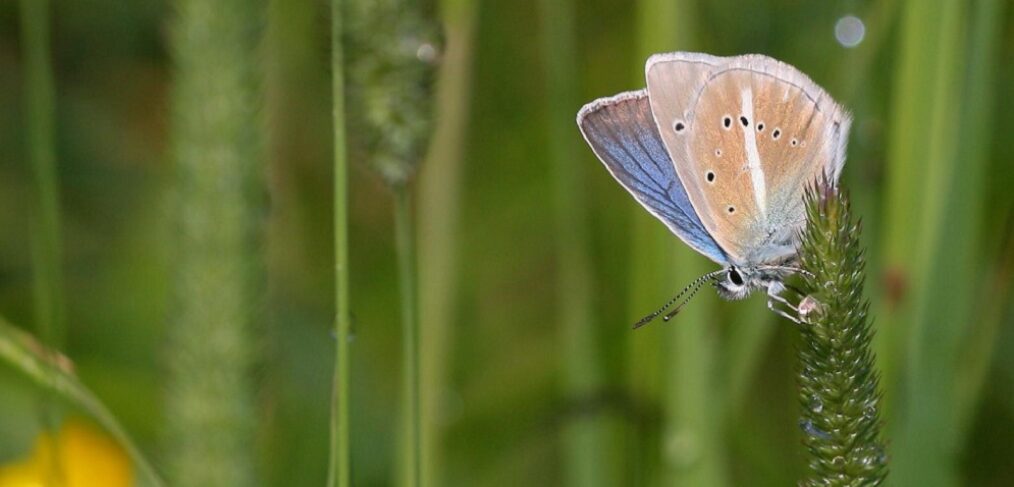
species of the week #57 – Damon blue
Damon blue reach a wingspan of 34 to 38 millimetres and are hard to confuse in Germany because of the large white, dagger-shaped stripe that appears on the otherwise grey-brown underside of the hindwings. The upper wings of the males are shiny turquoise. The wings of females are dark brown with a fine white margin.
| Distribution status | Extinct in Rhineland-Palatinate |
| Remaining deposits | Isolated in the Rhön and in the Franconian and Swabian Alb |
| Last sighting in rhineland-palatinate | 1840 in Trier |
| Habitat | Nutrient-poor, sunny, sparse dry grasslands, juniper heaths |
| Threat | Decline of sainfoin stands, intensive agriculture |
The damon blue is highly dependent on its host plant, the seed sainfoin. The whitish eggs, which are strongly fissured on the surface, are laid in the axils of the sainfoin flowers. The caterpillars eat the tissue between the leaf veins, resulting in a characteristic feeding pattern, the so-called window feeding. The sainfoin serves as a forage plant and home for the Damon blue in all life stages.
Intensive agricultural use in particular is destroying the sainfoin meadows. Due to the strong decline of the plant, the populations of the Damon blue are also in extreme decline. The closely related species Sainfoin Blue and Kidney Vetch are also threatened with extinction.
The conservation of sainfoins is a complex matter that can only be realised with targeted management and on nature conservation areas. For example, sheep should be grazed for the first time before mid-May, followed by a rest period until about the end of September, and then grazed again in autumn. Sainfoin germinates in raw soil, so it needs open areas, which may have to be created by topsoil removal, in order to create the required dry-hot microclimatic conditions.
The massive decline of the species and the lack of clearly positive responses to the relief measures taken so far indicate that other, as yet unknown, factors may be playing a role in the population decline.
Political necessity:
– Conservation and promotion of sainfoin populations
– Promotion of extensive agriculture
– Research funding to clarify further causes of endangerment
To further species of the week
Picture: By Kristian Peters — Fabelfroh 08:39, 12 August 2007 (UTC) – photographed by Kristian Peters, CC BY-SA 3.0, https://commons.wikimedia.org/w/index.php?curid=2550939
